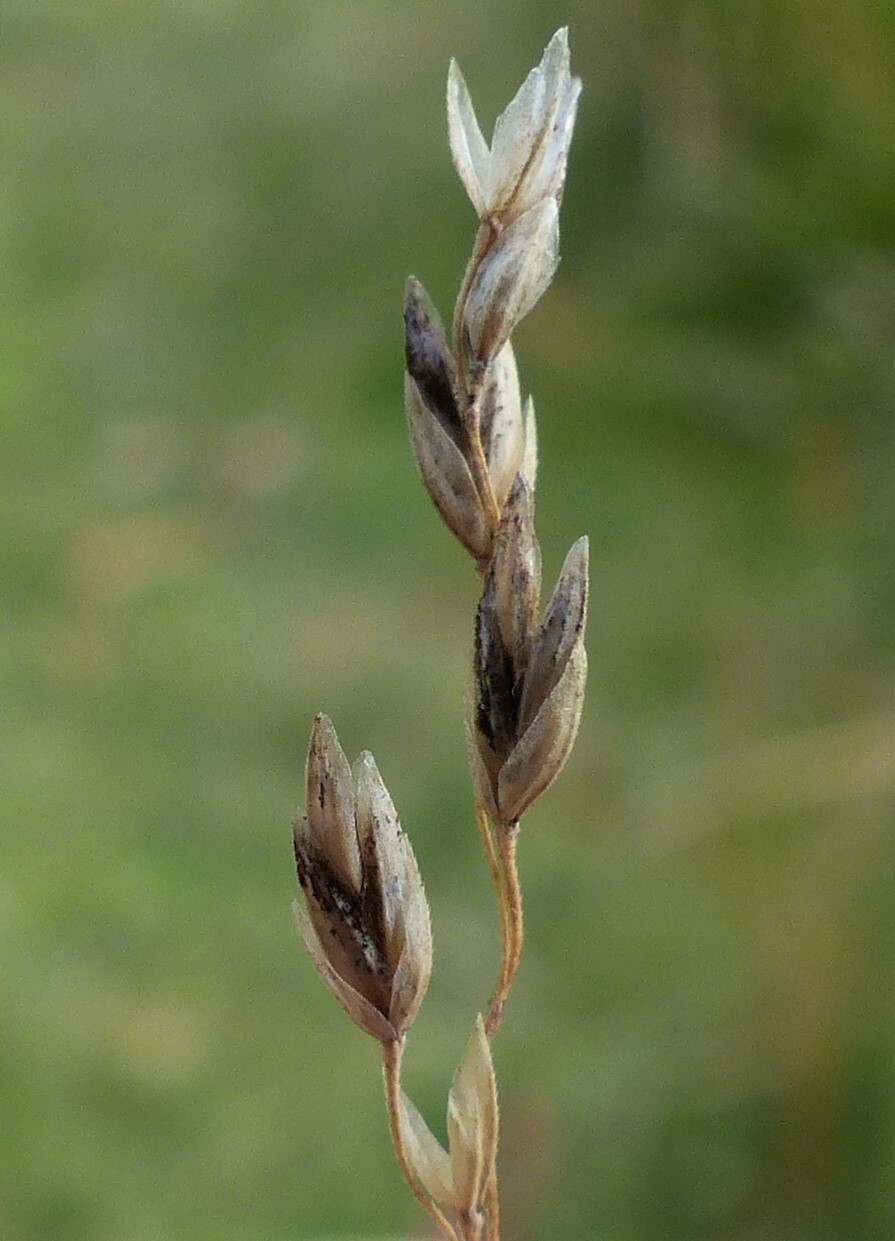Poa sieberiana var. sieberiana
Tufted plants. Leaves green, blades to 30 (–50) cm long, 0.3–0.7 mm diam., lightly scabrous; ligule 0.2–0.4 mm long. Spikelets 4–6 mm long. Flowers mainly Oct.–Mar.
LoM, MuM, Wim, GleP, VVP, VRiv, MuF, GipP, OtP, WaP, Gold, CVU, GGr, DunT, NIS, EGL, EGU, WPro, HSF, HNF, OtR, Strz, MonT, HFE, VAlp. Also SA, Qld, NSW, ACT, Tas. Probably the commonest tussock-grass in the State, occurring from near sea-level to the alps, but absent from the far north-west and rare in mallee communitites generally.
Alpine and subalpine forms commonly have almost smooth leaves and are difficult to distinguish from Poa hiemata Vickery but generally have coarser leaves than that generally higher alpine species.
Walsh, N.G. (1994). Poaceae. In: Walsh, N.G.; Entwisle, T.J., Flora of Victoria Vol. 2, Ferns and Allied Plants, Conifers and Monocotyledons, pp. 356–627. Inkata Press, Melbourne.
 Spinning
Spinning


